|
Western James Bay
Shorebird Project
Red Knots and Nano
Tagging - page 2 of 5 |
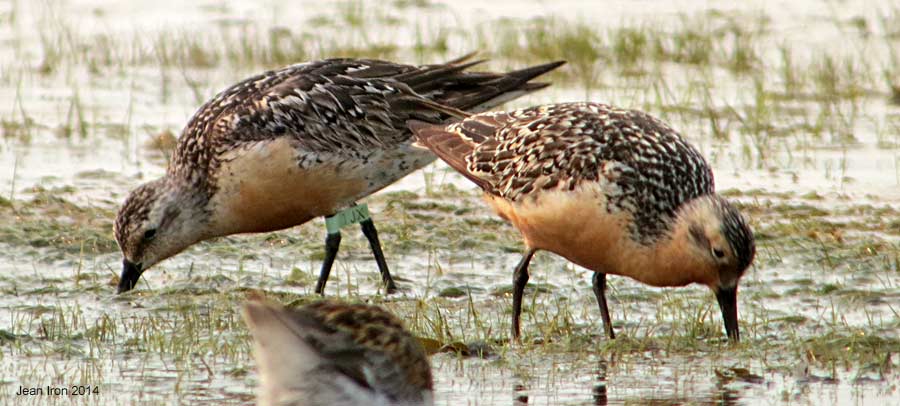 |
|
Red Knots fattening up on James Bay. 7
August 2014. Our job was to record flag combinations like the one above,
1JX. This lime green flag was put on in Virginia, USA, on 19 May
2009. It was resighted on James Bay, Ontario Canada at Paskwachi Point (near Longridge) and
Longridge Point on 14 and 16 August 2010, at Little Piskwamish and
Longridge on 3, 11 and 12 August 2011, and in New Jersey, USA on 24 May
2012 and 16 May 2014. See this website for info on banded
shorebirds: http://report.bandedbirds.org/Search.aspx
This knot is at least 6 years old. After breeding in the Canadian
Arctic, flag resightings such as this demonstrate the importance of
James Bay to Red Knots on their southbound migration to wintering
grounds in South America |
| |
|
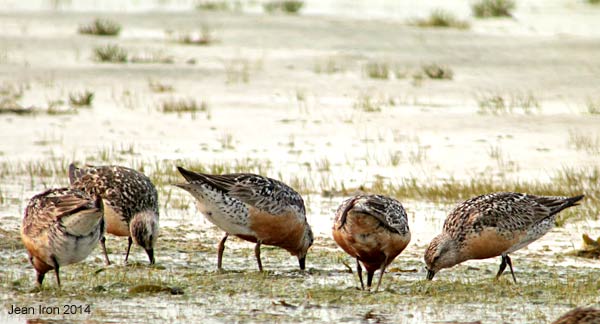 |
|
Please see video:
Red Knots feeding at Little Piskwamish.
|
|
|
|
This is the best spot I
have surveyed for Red Knots on James Bay. |
| |
|
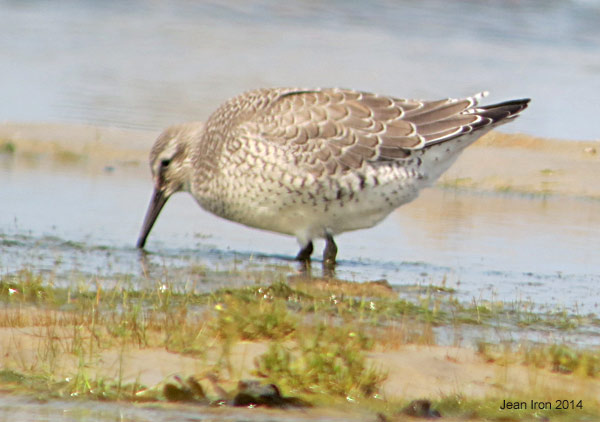 |
|
Our crew recorded its
first juvenile Red Knots on 8 August 2014. This photo was taken on
10 August. |
|
|
|
Please see video:
juvenile Red Knot feeding at Little Piskwamish on 10 August. |
| |
|
Shorebird Tracking |
|
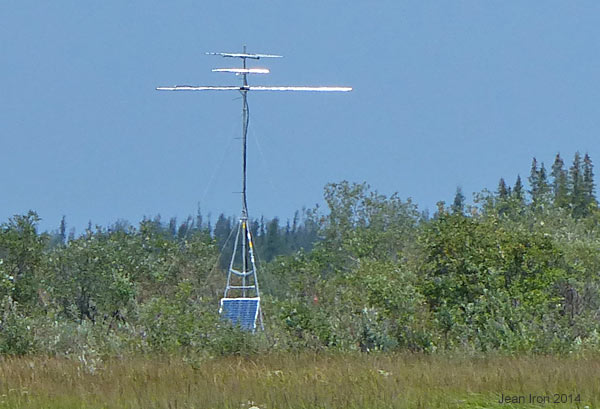 |
|
Shorebird Tracking:
Motus Tracking Tower at Little Piskwamish |
| |
|
A system of nano-tagging shorebirds
(begun last summer on James Bay) with Motus tracking towers has been
set up to track these species of shorebirds: Semipalmated Sandpiper,
White-rumped Sandpiper, Dunlin, Hudsonian Godwit and Red Knot. Nano-tags
are tiny and their signals can be received within a
20 km radius of a tower. Tags are attached when the shorebird is
banded and each tag has a different frequency. Several towers were
set up this summer along southern James Bay. Other towers are
located along Lake Ontario, Lake Erie, St. Lawrence River and
Maritime Provinces including Bay of Fundy and the East Coast of
Canada. Towers are 4-5 metres high and record time and GPS.
|
| |
|
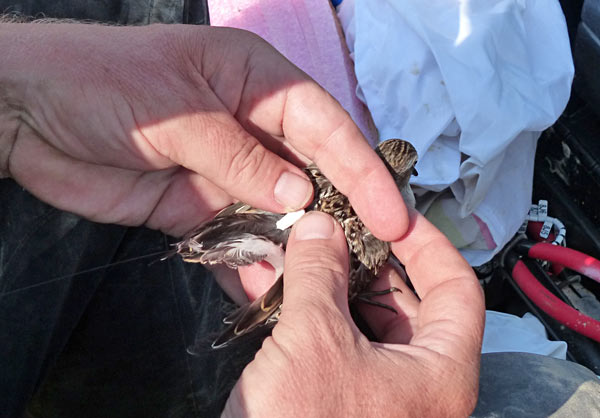 |
|
The nano tag (white with an antenna
sticking out behind) is affixed to the bird's rump. It is super
light-weight and will drop off or be shed after about two months.
The Motus tracking tower will record how long a tagged bird stays in
an area. Also, we hope that the bird passes other towers on its
southbound migration, giving information about route and timing. |
|
|
|
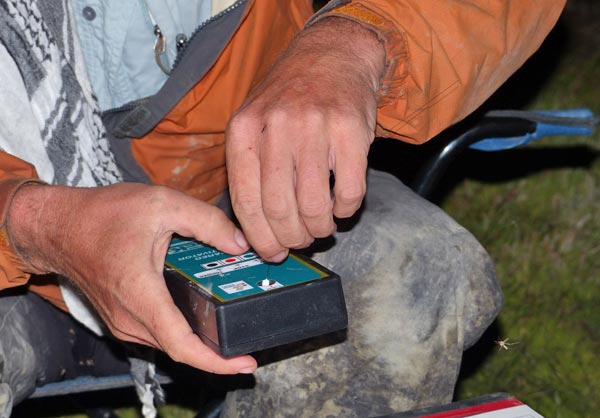 |
|
The nano-tag is
activated by this special box prior to being affixed to the bird's
back. |
| |
|
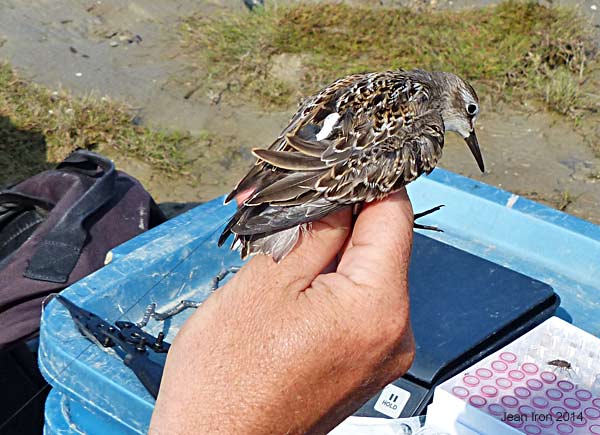 |
|
75 Nano tags were
deployed at Little Piskwamish. We look forward to hearing the
results. |
| |
|
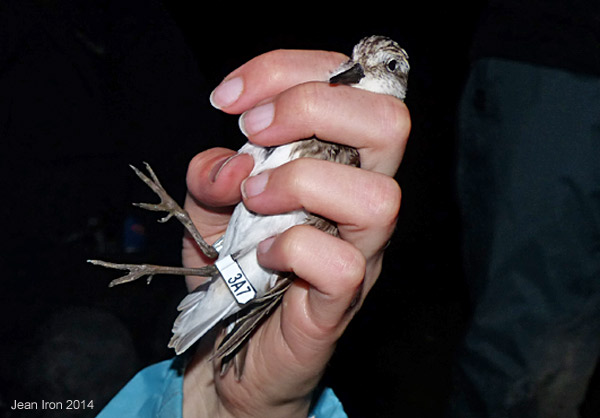 |
|
This Semipalmated
Sandpiper carries a white flag signifying it was banded in Canada. 1
August 2014 |
| |
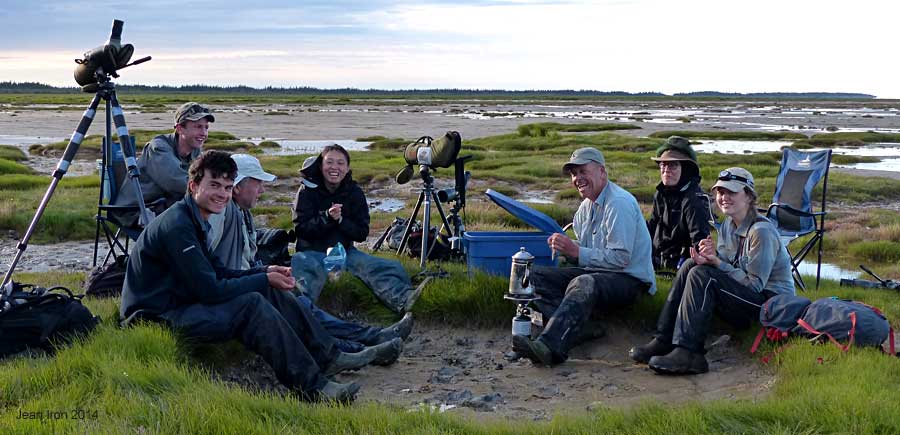 |
|
Prior to banding at night on 1 August,
we celebrated my birthday by having a wiener boil with creek tea and
coffee on the mudflats Thanks Mark for organizing a memorable
and unique birthday. |
| |
|
Now go to Page 3 |
| |
|
|